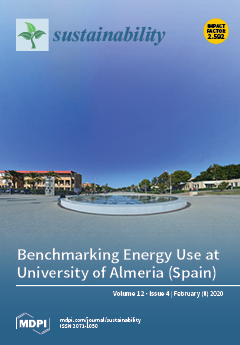Straw retention is a widely used method in rice planting areas throughout China. However, the combined influences of straw retention and nitrogen (N) fertilizer application on greenhouse gas (GHG) fluxes from paddy fields merits significant attention. In this work, we conducted a field experiment in the lower Yangtze River region of China to study the effects of straw retention modes and N fertilizer rates on rice yield, methane (CH
4) and nitrous oxide (N
2O) emission fluxes, global warming potential (GWP), and greenhouse gas intensity (GHGI) during the rice season. The experiments included six treatments: the recommended N fertilizer—240 kg N·ha
−1 with (1) no straw, (2) wheat straw, (3) rice straw, and (4) both wheat and rice straw retentions; in a yearly rice–wheat cropping system (N1, WN1, RN1, and WRN1, respectively); as well as both wheat and rice straw retentions with (5) no N fertilizer and (6) 300 kg N·ha
−1 conventional N fertilizer (WRN0, WRN2). The results showed that CH
4 emissions were mainly concentrated in the tillering fertilizer stage and accounted for 54.2%–87.5% of the total emissions during the rice season, and N
2O emissions were primarily concentrated in the panicle fertilizer stage and accounted for 46.7%–51.4% total emissions. CH
4 was responsible for 87.5%–98.5% of the total CH
4 and N
2O GWP during the rice season, and was the main GHG contributor in the paddy field. Although straw retention reduced N
2O emissions from paddy field, it significantly increased CH
4 emissions, which resulted in a significant net increase in the total GWP. Compared with the N1 treatment, the total GWP of WN1, WRN1, and RN1 increased by 3.45, 3.73, and 1.62 times, respectively; and the GHGI increased by 3.00, 2.96, and 1.52 times, respectively, so the rice straw retention mode had the smallest GWP and GHGI. Under double-season’s straw retentions, N fertilizer application increased both CH
4 and N
2O emissions, and the WRN1 treatment not only maintained high rice yield but also significantly reduced the GWP and GHGI by 16.5% and 30.1% (
p < 0.05), respectively, relative to the WRN2 treatment. Results from this study suggest that adopting the “rice straw retention + recommended N fertilizer” mode (RN1) in the rice–wheat rotation system prevalent in the lower Yangtze River region will aid in mitigating the contribution of straw retention to the greenhouse effect.
Full article





